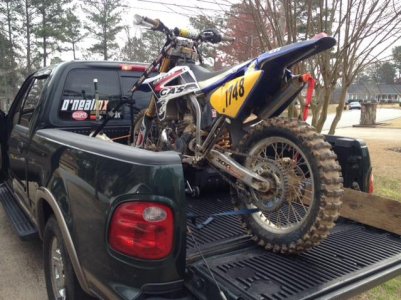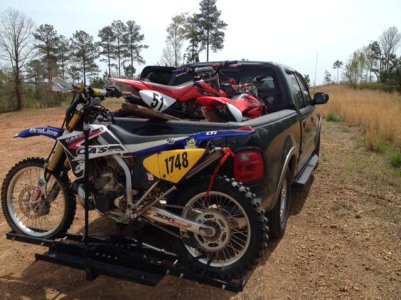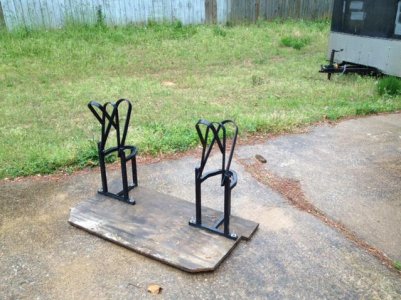noobi
New member
I'm keen to hear how..
The chock/brace makes everything rigid. The only way you will a drop in tension is if the strap loosens, or the tyre slides sideways. The use of the chock also transfers more pressure into the tyre spreading the load/footprint reducing slippage.
On the contrary, without a brace an impact can result in the fork compressing and creating reduced tension on the tie downs, which may offer an opportunity for the front to unload and also move.
Correct me if I'm wrong..
Technically, there is more tension on the tie-downs when you don't use a fork support. Only because you can pull the tie downs down further.
The only thing acting on the tie downs to create tension is the reaction from the fork springs, which follows F = -kx. Where x is extension, or in this case compression.
So if you pull the tie down further, which compresses the fork more, then there is a greater reaction force on the tie down, by sinθ.
I still use a fork support though. I feel not using a fork support means you have to be more careful when tying the bike down, as you have to pull the tie downs further into the fork stroke to allow for any rocking which might temporarily compress the forks further than they are tied which may allow the tie downs to pop off. Ideally his can't happen if you use carabiners and soft loop tie downs though.
Basically, as long as you're careful when you tie down the bike, it doesn't really matter how you tie it down.
Last edited:








